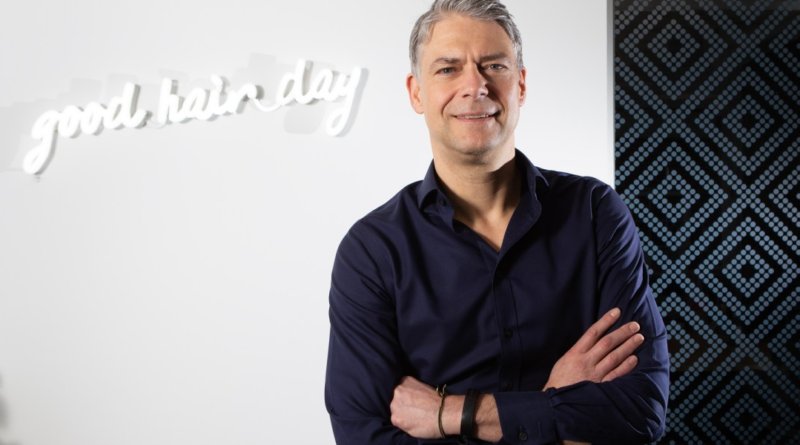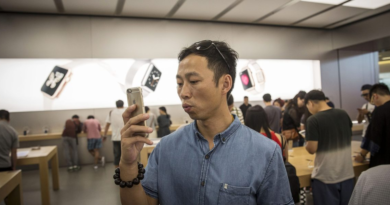Former L’Oreal exec says he told bosses to acquire a buzzy hair tech startup but they passed. 10 years later he’s now GHD CEO—and it’s selling nearly 6 products every minute
Jeroen Temmerman was working as managing director for L’Oreal in Sweden when he first heard of GHD.
“In 2008, a very cool brand popped up on the market and it was so successful in Sweden that everybody was talking about it,” Temmerman recalls to Fortune. “The best hairdressers of Stockholm had it on the shelf.”
He’s talking about GHD—the hair tech brand that was born and bred in the U.K. before its straighteners, hairdryers, and tongs made their way across the Channel.
The buzz was so loud that he thought L’Oreal should acquire it.
“I was on a team looking at the performance of GHD, to see if it could be a good asset for L’Oreal,” Temmerman says, adding that he gave his superiors his opinion on the brand— “it was very positive”—but didn’t hear back. It was above his pay grade.
The next time he heard about the company, was 10 years later when Coty (GHD’s parent company at the time) asked if he’d wanted to helm it: “For me, that was (full) circle.”
It’s been nearly another decade since he took on the top job at GHD—or, Good Hair Day—and in that time, he has taken the brand across Europe’s borders to Asia and the U.S., doubled the budget for R&D investment and as a result, introduced new wet-to-dry stylers which have taken the beauty world by storm and outperformed the company’s own expectations by over 34%.
Now, according to the company, over 3 million GHD hair styling tools are sold every year across 30 countries, nearly six products are sold every minute, and hairdressers use them in more than 45,000 salons. Last year, the business raked in $380 million in net revenue.
GHD’s feat is even more impressive when you consider that, at 23 years old, it didn’t exist when Temmerman started his career.
GHD’s CEO has only ever had two employers
Temmerman’s entry into the beauty industry in the 90s was unusual, to say the least.
“I was studying in Holland and there was a game that L’Oreal organized called Brandstorm, which was a competition between universities,” he remembers.
The task? To go against 80 college teams to come up with a cool sun protection brand. Temmerman’s team made it to the finals and got to pitch to the bosses in Paris.
“We didn’t win. But after that, they offered me a job,” he says, adding that “it was not the typical thing to do—everybody in Holland goes on to Unilever, Shell, big banks or whatever.”
He took the product manager job and that’s where he ended up for the next 2 decades. Promotion after promotion saw Temmerman move around the world—actively working across more than 20 countries and relocating to five—from the Netherlands to Paris, Sweden and Mexico.
He says the experience set him up for success in his current role as GHD’s chief, which has ambitious plans for global expansion. “Obviously, when you jump into a global job, that helps a lot.”
Does he think he could have gotten to where he is today (at 52 years old) quicker if he had left L’Oreal sooner? “Not sure”—but he has zero regrets over only ever having had two employers.
“I see your career as a backpack. You climb a mountain and you fill your backpack with tools on the journey to get to the top,” he says.
Essentially, whether or not you change employers frequently, the key is ensuring you’re constantly learning. But don’t overthink it.
“Don’t think too much about career [trajectory],” he says, adding that he was “most unhappy” in his job when he was focusing on what’s next instead of enjoying what’s now.
“You have to live in the now, do your job that you have at hand as good as possible, and trust the people around you,” he says. “If you excel in what you do when you’re young, you will get the next opportunity. It’ll come by itself.”
“It’s good to be ambitious,” he adds. “But don’t get over overly obsessed by it.”
Tips for bagging a CEO gig? Network, network, network
Although Temmerman had his eye on GHD while at L’Oreal—the hair tech brand, of course, had no idea. Instead, he says, the call to take its helm came thanks to lots of networking on his part.
“Honestly, I was not actively looking outside,” he says. “It was purely thanks to all the relations that I built in the 20 years that I was working that put me in connection with this opportunity because curiosity will drive opportunity.”
His top networking tip? Stop humble bragging on LinkedIn and get out there. Meet your peers in real life and get real about where you fall weak.
“The big thing is that you have to be authentically interested in what you do and then network will draw by itself,” he says, adding: “As a leader, you need to talk to people that are in the same kind of situations that you are in—not with a double agenda—just like, how did you solve that problem? Because I have this problem.”
“I don’t believe too much in showing off that everything is perfect,” he stresses. “The most interesting part in a discussion is how you deal with very complex situations at work, because everybody has them.”
Continuing on the theme of being honest, Temmerman admits that the jump from being a L’Oreal veteran to helming an “entrepreneurial” company was hard—and not without risk.
At the time, he was managing all of Latin America for L’Oreal and, on average, received a promotion every two years or so.
“To say goodbye to something that you know and to jump in a new adventure is always scary,” he says.
But when weighing up whether it was time to leave the company he had spent his entire adult life at, he recalls looking ahead at what he wanted from the second act of his career.
“I’ve run the half of the marathon. Now, I still have the other half of the marathon in my career to go and this was one of those golden opportunities that I that I had to take.”
In the end, it was time to fill up his backpack some more: “Sometimes you have to push yourself out of the comfort zone that you’re in and this was one of the opportunities to really take me back out of the comfort zone and put me in the stretch zone again.”
No rest for the wicked (or rather, ambitious)
Now that Temmerman is in the top job at GHD (now owned by Wella Company), he’s still not sitting comfortably or resting on his laurels.
“We are building the brand in the U.S.,” he says. “I think that is a fantastic challenge we have ahead of us. We don’t have the awareness yet. But we will get there.”
Already, he says that the State-side business has doubled in the last couple of years, GHD is now stocked in Ulta and Sephora, and it’s “creating a professional footprint” with SalonCentric, one of the largest wholesale salon and beauty supply distributors of professional beauty products in the country.
“I’m a strong believer in having good products, because then products will do the job,” he adds. “So we are set up for success, especially with the innovation pipe that is coming in the years ahead of us.”
Speaking of innovation, unlike Dyson—which pivoted from vacuums into hair tech with roaring success—don’t expect to see GHD side-step into other heat-related products outside of hair care, like radiators or irons.
Or, during Temmerman’s tenure, at least.
“I strongly believe that the brands of the future are the brands that are focused,” he insists. “In the beauty industry, I learned that brands with a clear focus and a clear DNA are the ones that can travel very fast.”
“So we will be focusing on a good hair day where GHD stands for—making women’s life easier, more beautiful by creating a good hair day.”
As for getting GHD’s products in the hands of women everywhere, instead of their many competitors? “There are more than 240 million consumers in the U.S., so the one that has the best products and the best value proposition and solves problems is the one that will win.”



